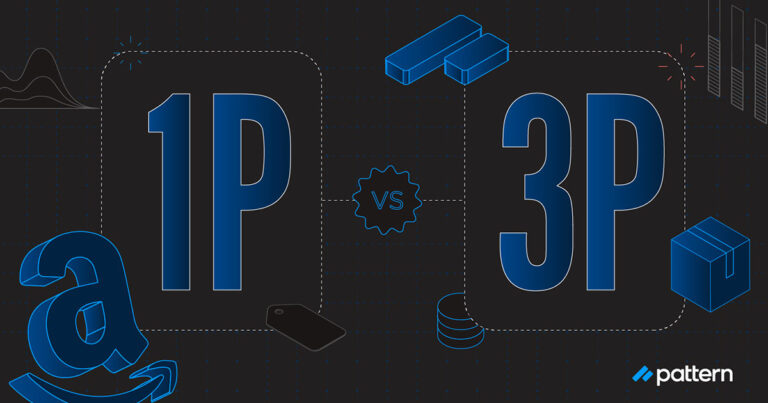Window shopping isn’t just done on foot anymore: it’s done on social media.
Sixty percent of people say that they find new products on Instagram, and according to Forbes, 30% of consumers say they’d make purchases through Pinterest, Twitter, Instagram, or Snapchat.
Consumers are increasingly turning to social channels to buy products, and the trend makes sense. The average person spends about two and a half hours on social media every day, and brands have put themselves in that space for years to market their products and capture users’ attention. 74% of consumers rely on social media for information regarding product purchasing, and 43% are more likely to purchase a product after learning about it on social media, according to Lyfe Marketing. The way we shop continues to evolve, however, and social shopping is making big gains in the ecommerce space.
What is social shopping?
Social shopping (or social commerce) is when sales take place directly through social media platforms. It’s important to note that social shopping is different from social media marketing. Rather than getting your product in front of potential customers and then redirecting them to a website to make a purchase, social shopping cuts out extra steps to increase conversion and allows customers to check out right in the network they’re already using.
Through social shopping, brands can tag product images in organic posts with key information and links for customers to purchase the product directly. It makes the purchasing experience much easier for customers.
Social shopping sales conversion
Combined with chatbot checkouts and autofill options for payments, BigCommerce reports that social shopping is massively outperforming the ecommerce purchasing journey brands are accustomed to. Businesses who practice social selling generally see an average $5 return for every $1 invested.
Two standout platforms in the social shopping space that brands should pay attention to are Instagram and Pinterest.

Instagram is leaps ahead of other social media platforms in the social shopping space, and their shoppable posts are wildly popular. According to Facebook (Facebook now owns Instagram), 130 million Instagram accounts tap on a shopping post to learn more about products every month.
The stats back up how effective a platform Instagram is for brands.
- Barbour, a manufacturer of outerwear for fishermen and mariners, reported that since starting to use Instagram’s shopping post feature, their sales from the app have increased by 42% and traffic to their website from Instagram is up 98%.
- TYME, a company that sells hair styling tools, have seen their traffic from Instagram increase by 44% since implementing shoppable posts.
- Lulus, a clothing company on Instagram, claims that shopping on Instagram can be credited for over 1,200 of their orders and 100,000 sessions.
What social shopping looks like on Instagram
Instagram has made social shopping very user-friendly on their site. Shoppable posts appear with little shopping bag icons in the left hand corner of the image that users can click on to see the price and details about the product they’re looking at.

Another way Instagram has made shopping on their platform easy is by adding a “Shop” navigation tab to the top of their Explore page on the app so that customers can easily peruse products they can purchase through the app. Instagram is currently beta testing ecommerce capabilities that allow shoppers to make purchases directly from their Instagram feeds with an easy checkout process.

“Our projection is that over the next two years, every major consumer brand will have access to sell their goods through Instagram,” says Michael Lagoni, CEO and Co-Founder of Stackline.
Social shopping on Pinterest
While Instagram is arguably the most popular social shopping platform, Pinterest is one of the first platforms to introduce native shopping features, specifically their “Buyable Pins” feature allowing users to purchase products directly from pins.
Since they went public in 2019, Pinterest has begun positioning themselves as less of a social media company and more of a commerce company, expanding the potential for their social shopping features. According to Lagoni, Pinterest captures 2 billion searches per month. They’re prime to enter the ecommerce space as a leading social shopping platform.
What social shopping looks like on Pinterest
Consumers on Pinterest, similar to consumers on Instagram, can easily access product information and pricing when they stumble across a product image they love that has a shopping tag icon featured in the corner.
Pinterest plans on offering direct payment and checkout options on the platform in the near future.

How can brands besides lifestyle brands leverage social shopping tools?
While lifestyle brands consistently perform well in the social shopping space, they aren’t the only brands that can take and should take advantage of it.
“Over the past year, we’ve seen a very rapid growth in health and beauty brands, grocery, vitamins and supplements . . . really spanning a broader and broader subset of all CPG,” Lagoni says. Social shopping trends impact every category.
One way brands can leverage social shopping is to find ways to be more creative with the way their products are featured on platforms—think about sharing creative flat lays or high quality images of customers using your product. Brand-driven storytelling on social media is also an important element to focus on so users see beyond the product and understand the why.
On the technical side of things, Lagoni says brands are going to want to form connections across all platforms because that’s how consumers shop today. Gone are the days when social media can be overlooked in strategies to increase sales.
Brands may need to consider getting ecommerce expertise when they’re managing social media platforms. In the past, social media marketing teams and ecommerce teams have operated separately. Cross-functional collaboration to make a strong digital commerce team within your organization may be the next step to make social shopping work well with your company.
Pattern’s digital marketing team and global brand managers work seamlessly to ensure our brands optimize their sales on ecommerce.





